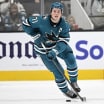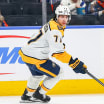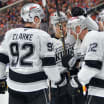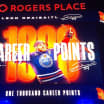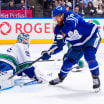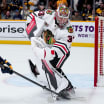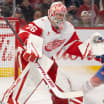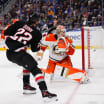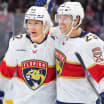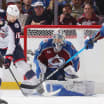The Coaches Room is a regular feature throughout the 2022-23 regular season by former NHL coaches and assistants who will turn their critical gaze to the game and explain it through the lens of a teacher. Phil Housley and Mark Recchi will take turns providing insight.
In this edition, Housley, a Hockey Hall of Fame defenseman who coached the Buffalo Sabres and was an assistant with the Nashville Predators and Arizona Coyotes, discusses how coaching staffs prepare for the start of the first round of the Stanley Cup Playoffs.
Coaches count on video, scouting reports to prepare for playoffs
Housley says recent games studied closely, nothing overlooked
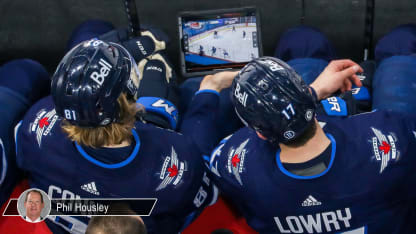
By
Phil Housley
Special to NHL.com
As teams are winding down the final week of the regular season and getting ready for the start of the Stanley Cup Playoffs, their video coaches are in a total grind. Not only do they have to prepare the coaches for the teams they are facing in their final regular season games to try to either get into the playoffs or improve their seeding, but they also need to review video of teams they could face in the first round.
Some teams, like the Toronto Maple Leafs and Tampa Bay Lightning, who will face each other in the Eastern Conference First Round, know who they're going to play. That can be an advantage because they can focus on one opponent, and don't have to run around looking at multiple teams they might face.
At the beginning of the regular season, you're going to look at scouting reports, special teams and 5-on-5 a little bit more in depth because you're facing the team for the first time. You've got video of exhibition games and where the opponent's systems are at.
As the season goes on, that gets cut down immensely because it's a long grind and guys don't watch a lot of video, so you just make your bullet points. The head coach will come in and make a few points before the game and then it's just going out and playing and allowing your team and players to do what they do best.
But when preparing for your first-round opponent, nothing will be overlooked in the scouting report. You can fall back and review some of the things that you used during the regular season, but you're going to get more in depth and fine tune your game plan.
It starts with the opposing goalie. That's one of the big things. The goaltending coach will give a presentation heading into the series.
Coaches will look at regular season games against the opponent, especially if they had their full lineup. You'll break down the video from those games, use the pieces you think will give you an advantage and review whatever notes you took on those games.
What worked on the power play? What did the penalty kill do well? Were we aggressive? Did we block a lot of shots? Did we get in shot lanes? Where were some of the weaknesses 5-on-5 that we were able to exploit during the regular season that we can use in the playoffs?
You'll also look at the opponent's most recent games leading up to the playoffs. Usually you go back three games, but you might go back five games, especially the games they won or that they lost by a certain amount. Maybe it wasn't the No. 1 goalie. You need to take all of those little things into account.
But you're definitely going to use those most recent games, especially if the team was fighting to get into the playoffs because they're going to be playing their best players, they're going to be playing them a lot and they're going to play their best goalie.
There will be certain meetings during the week heading into the first game of the playoffs where you might focus on 5-on-5, the power play or penalty kill. You might go over every opposing player and what their lines could look like.
You're going to see a lot of little things about time on the ice for specific players, what their winning percentage is on face-offs in the right and left dot, who is going to be first over the boards in certain situations.
And you'll probably look at how many power-play opportunities you might expect during the series and how to make the most of them. You might not get as many because some teams are very, very disciplined in the playoffs and you often get fewer power plays per game than during the regular season. The same thing goes for the penalty kill.
As far as practice, in the days between the end of the regular season and the start of the first round, teams will work on their skills and shooting and give the goalies the work they need. You might also have a lot of situational walkthroughs.
If your minor-league affiliate didn't qualify for the playoffs, you can call up players them like the practice squad in football. Those players can do some reps of what your team is going to face, such as breaking out pucks against the opponent's forecheck and maybe setting up the penalty kill forecheck in the neutral zone to break that down, so you can have a better understanding and a little bit of a taste of what's ahead.
After the series begins, there probably won't be much time for practice. It depends on the schedule, but you're mainly playing games every other day and you want to save all the energy you can.
You might have optional practices where some players like to go on the ice and then you'll have a morning skate on game day to fine tune things and get ready for the game. As you get deeper into the playoffs, you might just have the players show up for the game because it's so important conserve energy. But that's pretty much the protocol.
The coaching staff will throw some analytics in the pre-scout for 5-on-5 and look at every aspect to try to prepare your team the best that you can. Then, it comes down to execution.
Execution and discipline.
It's so important that you don't retaliate and put yourself into a position where you're killing penalties and defending all the time. But I think 5-on-5 is going to be so important in the playoffs. If you can score 5-on-5, you have a tremendous advantage over your opponent.



